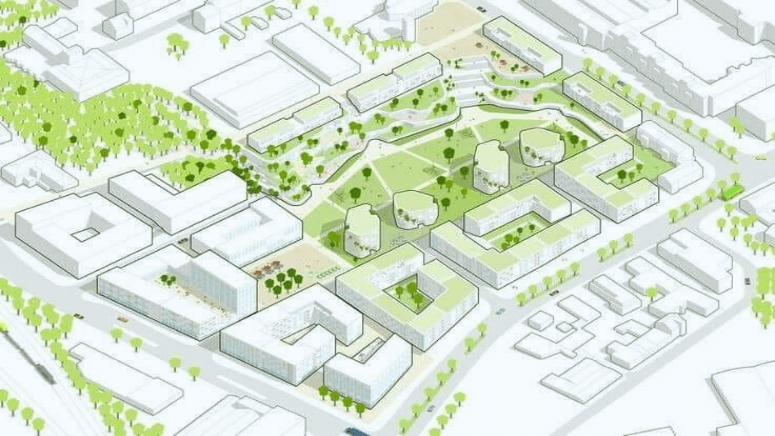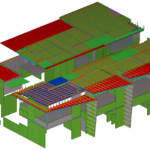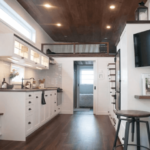Urban planning and design are critical in shaping the environments in which we live, work, and design. These disciplines involve great tools that can create unique and accurate visions. Among the tools widely used in this sphere, it is possible to pinpoint Building Information Modeling (BIM) software, with Revit being one of the most significant innovations for the industry’s specialists.
In this post, I will share with you the positive impact of using Revit in urban planning and design. I will also explain how it works, the benefits and drawbacks of using it, and what the future may bring as a result of this technology.
What is Urban Design?
Urban design is the process of designing and shaping cities, towns, and other urban areas. It comprises architectural and landscape design, planning, and engineering to create ideal environments for human habitation. Urban design takes into account a community’s total human, economic, cultural, and environmental health.
Core Functionalities of Revit in Urban Planning
As a powerful tool for urban planners, Revit has a host of features that can be of immense benefit. Among those, it boasts the feature of generating accurate and realistic visualizations of cities’ 3D models. These models assist planners in visualizing large projects and making an effective solution to predict how different components will align in the area they are working on.
Its realistic modeling enables the user to run through some experiments and variations on the layout and design and select the option that is most suitable for infrastructure, transportation, and public areas.
The second importance of 3d modeling revit feature of the application is data management tools within the Revit environment.
It has features to compile other databases, such as the geographic information system (GIS), in which demographic and environmental data or the usage of the available land can be determined. Thus, they make it easier to better understand the project context and lead to better creation of sustainable urban plans.
The Role of Revit in Advancing Urban Planning and Design
Main benefits Revit improves urban planning and design by offering designers, engineers, and planners the ability to work in one platform. It supports sophisticated views, dynamic data handling, detailed analysis, and modeling and provides a nice practice.
Improved Visualization
Perhaps one of the most crucial advantages when it comes to applying Revit during architectural planning and designing is the option to work with 3D visual prototypes. Through this feature, designers can show the design ideas in a more physical copy form, and therefore, when the stakeholders are viewing the designs, they are able to have an easier time understanding what the designers intend to create and even offer their opinion.
It also helps to prevent designers from finding the problem with design in the early stage of its evolution, which will help to save more money and optimize the outcomes of projects.
Increased Collaboration
Revit relies on the cloud, enabling many people to work on the same project and hence bridge the gap of disciplines within architectural design. This feature is essential as it strengthens communication, minimizes time wastage, and creates a convergence of objectives.
However, using Revit, which has built-in project management tools, a member of the team can mark and comment on changes that have been made in real-time, hence increasing the efficiency of a project.
Data-Driven Decision Making
Data in Revit can be inserted into the model by the designers and effectively used to make design decisions due to the parametric modeling. For instance, the merger of transportation data with an indicative model of a city’s streets ensures that potential traffic problems are predicted before construction commences.
Having the scientific method involve in the process leads to more efficiency and improved designs of environments within urban cities.
Advantages and Challenges of Using Revit
The allure of Revit is clear; its advanced features enable a level of detail and analysis that is essential for data-driven urban planning. Some notable advantages include the ability to manage large datasets within a single model and the ease with which various design alternatives can explored and revised.
Yet, the implementation of Revit comes with its challenges. For instance, the learning curve can be steep for some professionals, and the upfront investment in software and training may be a barrier for smaller firms. Additionally, the intensive computing power required and the complexity of some urban planning projects can stretch the capabilities of the urban design software.
Despite these challenges, the time and resource efficiencies gained from working with Revit can justify the adoption effort for many urban planners and designers. Revit being one of the most significant innovations for the industry’s specialists. To maximize these benefits, it’s essential to hire a dedicated Revit Architecture Modeler.
Future Trends and the Role of Revit
Urban planning and design are at the cusp of transformation, driven by advancements in digital technologies. Revit is set to continue playing a pivotal role, possibly incorporating augment reality (AR) and virtual reality (VR) to provide immersive design experiences or AI and machine learning to predict urban growth patterns.
Understanding and adapting to these trends are essential for professionals who aim to remain at the forefront of urban innovation. Continuing education and networking can ensure that urban planners and designers are ready to harness Revit’s full capabilities as it evolves.
Conclusion
Urban planning and designing has attracted and increased in vibrancy through the incorporation of Revit Modeling Services. In improving communication between users, to acting as a solid basis for modeling utilities and simulations needed to construct modern cities with, Revit has become an indispensable tool in architecture.
It doesn’t matter if you’re a professional urban planner by now or a learner just starting your career in design. Please feel free to express your experience regarding Revit Modeling Services in the comment section. In what way do you think it has really changed your ideas in urban planning and designing?
For more information about Revit Modeling Services or urban development options, do not hesitate to contact us or browse through our other relevant content. In this way, in cooperation we can construct cities that on the outside look beautiful, on the inside are functional and very important – meaningful.




